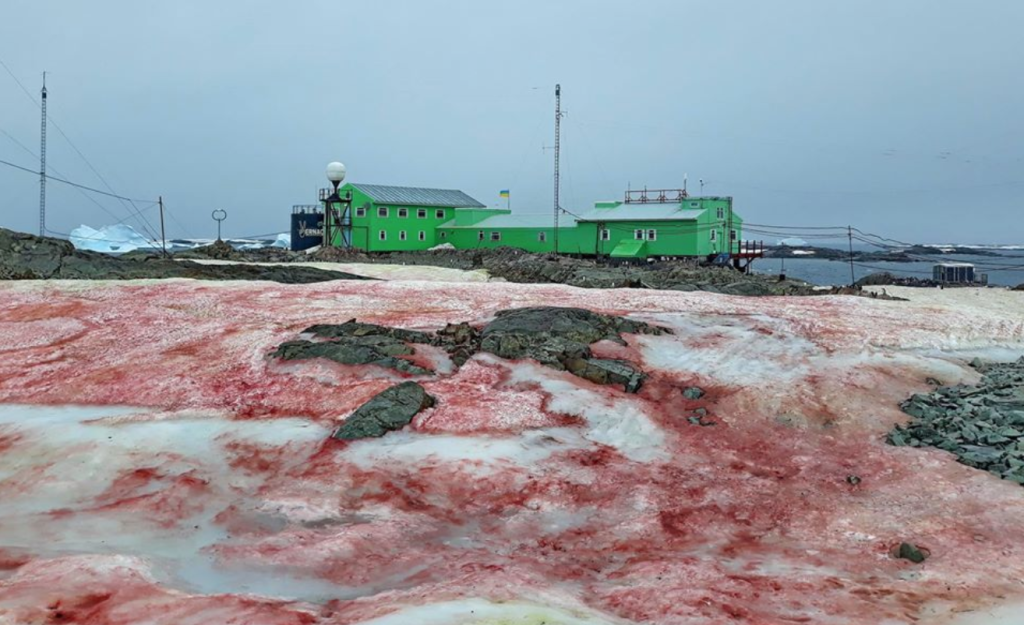
While most people associate snowcover with pure white nothingness, the snow in Antarctica is taking on a scene reminiscent of a bloody slasher movie. And while the bloody scene is looking worse over time, experts say there’s nothing murderous afoot: the red snow has a completely natural source.
According to the Ministry of Education and Science of Ukraine, the snow around their research center, the Vernadsky Research Base, is turning red due to the presence of algae. The algae thrive in freezing water and spend winters lying dormant in snow and ice; when summer comes and the snow melts, the algae bloom, spreading red, flower-like spores. Known as Chlamydomonas Chlamydomonas nivalis, the algae is quite common in snowcover around the world. And while snow on mountain peaks may prevent or reduce the way algae blooms, seasonal variation in coastal areas, such as at the Vernadsky Research Base, allows for the red to come to life.
While it looks like blood to many, some have a fruitier take, calling it “raspberry snow” or “watermelon ice.” But as tasty as those descriptions sound, the snow itself isn’t sweet. Astaxanthin is present in the algae, which is why it has a red color. Astaxanthin is also found in other naturally red or pink things around the world, including shrimp, lobster, and salmon. Astaxanthin is also what gives flamingos its pink color. Astaxanthin is used in different pharmaceutical and cosmetic products too.
While “don’t eat the yellow snow” is common advice among most, this red snow could be quite healthy due to the presence of astaxanthin. In humans, astaxanthin is a powerful antioxidant with broad health implications and unlike other antioxidants, such as beta carotene, zeaxanthin, vitamin E, C, D and selenium, astaxanthin never becomes a pro-oxidant in the body. Like others in its class, astaxanthin can reduce pain, fatigue, and inflammation.